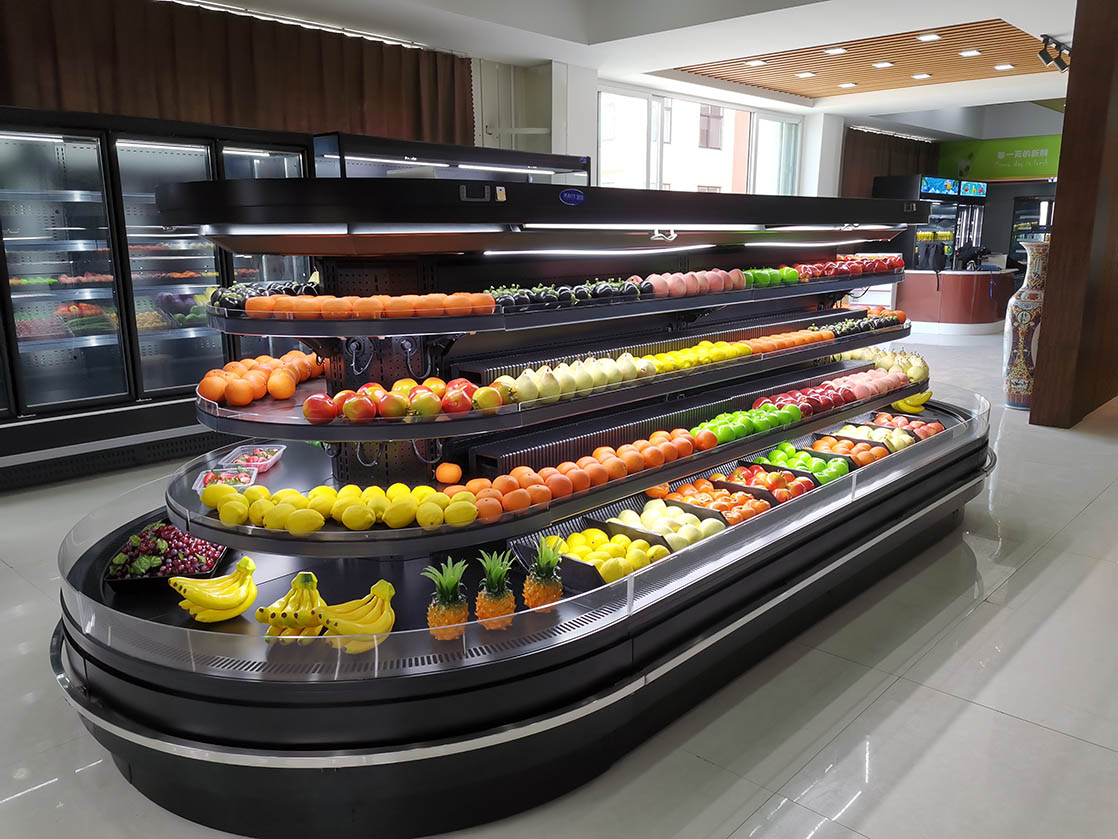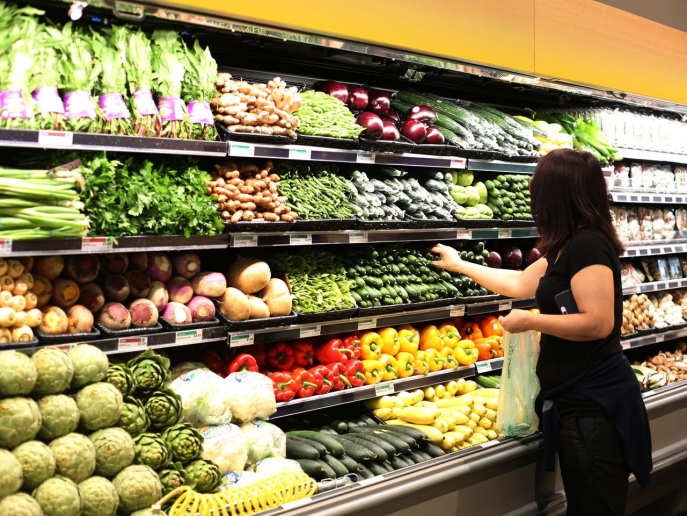Fresh food is by no means simple, as it is prone to spoilage, and the cost of operating fresh food is quite high. The champion supermarket under Carrefour, which focuses on fresh food, has withdrawn from the Chinese market due to the high cost. The supermarket fresh food business has very detailed management and know-how for stocking, inventory, structure and even goods display and cutting knife hand, etc. These links drive the fresh food business and even determine the core competitiveness of the supermarket business.
First-in, first-out Accelerated turnover
Many operators reflect that fresh food is the most powerful super business segment in terms of customer gathering ability, because “people are food-oriented”, and fresh food can also boost the sales of other commodities.
“First of all, of course, is the purchase of goods, most supermarkets are now adopted by the farmers direct supply, that is, from the field to determine the production of sales. Direct supply model, farmers and the interests of the store to protect the retailer, the most direct is to reduce the cost of goods, a vegetable if the price is 2.5 yuan / kg, if not direct supply, the purchase price may be 2.2 yuan, because there are many vegetable wholesalers to draw, if the direct supply is free of all intermediaries, only 2 yuan purchase price can be, then our gross profit space has increased.
But the purchase of goods to control costs, and can not solve the core problem of fresh business – freshness. Some operators calculate an account, for example, the purchase price of 2 yuan / kg of a certain vegetable, when fresh can indeed sell 2.5 yuan / kg, but once the fresh part of the rotten leaves may only sell 2.1 yuan / kg, and then stagnant even the cost price of 2 yuan / kg can not be sold, so accelerate the turnover is to maintain freshness, so that fresh products remain competitive key.
“Here we have to talk about the main principles of fresh management, to accelerate the turnover of the first in the daily sales peak as much as possible to sell fresh products to avoid becoming loss, new products and old products must be placed separately, can not be confused, can not give guests a sense of not fresh, but also to prevent the fresh products and non-fresh products ‘cross ‘, to avoid the overall freshness decline. Therefore, the personnel of the fresh food department must do inspections from time to time to keep the fresh food products at a suitable refrigeration temperature. To maintain the freshness and high turnover rate of fresh goods, it is necessary to follow the principle of “first in, first out”, strictly control the inventory and keep the goods “first in, first out”.
In fact, to follow the “first in first out” principle is not easy, after all, the old goods are more stagnant, while the fresh goods are easy to sell, so some fresh department personnel sometimes mix the old and new goods, or even “last in first out”.
Do fresh must give people a sense of freshness, so encounter deterioration or imminent deterioration of fresh goods must be disposed of, do not think it is a waste, in fact, the loss of part of the deteriorated goods, so that the fresh shelves as a whole look fresher, but will accelerate the normal sales and turnover of fresh goods, the overall is conducive to the fresh plate revenue. On the contrary, the fresh produce counter that is not willing to deal with stalled goods will be deserted, resulting in the fresh goods also being stalled and then becoming spoiled goods, resulting in greater waste.
Study the balance between three meals a day and gross profit
Since fresh goods are closely related to people’s dinner table, what to sell on fresh products must be studied in the consumer’s three meals a day, especially in community-type supermarkets.
“For example, if the standard is 3,000 categories, the number of categories can be reduced to 1,200, 900 or 700 depending on the size and area of the store, because customers have a selection process. But if it is a standard supermarket of thousands of square meters or even a small store of hundreds of square meters, just a few categories can be, the fewer the categories, the faster the customer can choose and accelerate the turnover of goods. In particular, some small and medium-sized stores opened in the community, similar goods just a few categories, for example, eggs, originally at least 5-6 different brands, but in the community good convenience store is only a brand of bulk eggs, because of the small selection and purchase convenience, so customers usually decided to buy within five minutes.” Mr. Shen pointed out that the premise of reducing the number of categories to focus on certain models is to study the customer’s daily meals and know what kind of fresh products are often purchased by customers in their daily lives.
One of the reasons why RT-Mart’s fresh items are doing so well is that it has gone through a big data study of the checkout strips as a way to deduce which fresh items are the most popular, especially those related to daily meals.
“In our study of three meals a day, we found that more and more customers prefer convenient fresh food that has been processed, so we would focus on pushing noodles, cooked food and even launch clean fresh items with good meat and vegetable combinations, which meet customers’ daily needs and sell well.”
Carrefour, on the other hand, took this research to the extreme
We will sell the most attractive type of fresh goods at a loss, that is, to make negative gross profit goods, with these low prices and the most attractive goods to pull customers to buy, but you know, often customers will not buy only one product, we will be in the merchandise structure and display settings will be negative gross profit, medium gross profit and high gross profit goods mix and match, so that customers rushed to low-priced goods, but the results also bought a lot of medium and high gross profit In fact, the retailer makes money and accelerates the turnover rate of fresh products.
Ancillary Tools
In addition to the various rules mentioned above, there are also a number of aids that can help with fresh produce management.
“The management of the store noticed that many parents, especially the elderly, dropped off their children at school in the morning and went shopping at the store. So the Century Lianhua store opened an hour earlier than other stores and did a limited-time special sale of fresh food in this hour, which attracted many nearby residents to compete for the purchase. And in the evening market, that is, after 8 o’clock at night, the store will also sell many fresh goods at a discount. This “time difference” to make articles of fresh produce promotion method greatly accelerated the turnover rate of goods, reduce losses.
For example, OLE supermarkets stack fruits and vegetables side by side in different colors, and create a sense of overflow when stacking fresh products to make customers feel that the supply is sufficient and the goods are fresh. Some supermarkets will also sprinkle water on fruits and vegetables, along with the glittering water drops of fruits and vegetables products especially reflect the sense of freshness. According to incomplete industry statistics, these display techniques can improve at least 10% to 15% of fresh goods sales.
The most direct impact on fresh produce management is the human factor. “In the fresh food department of the store, customers see the cut meat, but in the background is the whole pig, which is subject to professional knife hand to the whole pig for different parts of the cut after different prices placed in the front freezer, which means that a good knife hand can split the pork reasonable, as much as possible to divide the effective sale of parts to maximize revenue. Conversely, an inexperienced cutter can result in wasted meat. Sometimes a good cutter can cut about $100 or even hundreds of dollars worth of pork more on a hog than a poor cutter. This has a direct impact on raw department revenue.”
To motivate the fresh produce department staff, CR Vanguard recently launched a “fresh produce partner system.” In a China Resources Vanguard internal information to see, different fresh food employees will have different job settings, will have different scoring points, according to the individual indicators to achieve the bonus, which, the target award amount can be based on the team’s fixed salary amount, can also be determined by the business unit alone; quarterly indicators to achieve 100% ~ 150%, the quarterly indicators bonus amount of 0 ~ 30%; annual indicators to achieve 100% ~ 150%, the annual indicators bonus of 0 ~ 30%; annual indicators to achieve 100% ~ 150%, the annual indicators bonus of 0 ~ 30%. 150%, the annual target bonus is 0~50%. This “fresh partner system” is also conducive to fresh management and front-line staff to expand fresh performance. (Retail Dynamics). )
Post time: Apr-17-2023









